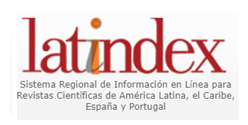THEORIES OF ENGLISH LANGUAGE TEACHING BASED ON THE MEDIATION OF EDUCATIONAL TECHNOLOGIES IN ETHNO-EDUCATION CONTEXTS
Keywords:
Ethno-Education, English teaching, educational technology, cultural diversity, rural areasAbstract
This article aims to study the theoretical bases for teaching English from the didactic mediation of educational technology in the ethno-educational context of rural communities in the south of the department of Tolima. In this case, the research studies the way in which the inclusion of designed technologies and ethno-educational practices support the learning of English as a foreign language in the context of communities, respecting their cultural idiosyncrasy. In this line of research, a qualitative study was carried out that included semi-structured interviews, participatory interviews and document analysis where significant advances were observed in the motivation and learning of students and difficulties regarding teacher training and digital inequality. It is concluded that Educational Technology has a potential that could be used to use English as a language that can be learned in any culture without altering its essence. In addition, certain strategies are offered that would significantly improve the implementation of this technology in these rural areas.
Downloads
References
Acosta, M. (2015). Afrodescendencia y educación intercultural: Retos y oportunidades en América Latina. . Ediciones Unesco.
Byram, M. (1997). Teaching and assessing intercultural communicative competence. . Multilingual Matters.
Canagarajah, S. (1999). Resisting linguistic imperialism in English teaching. Oxford University Press.
Chapelle, C. (2001). Computer applications in second language acquisition: Foundations for teaching, testing and research. . Cambridge University Press. https://doi.org/https://doi.org/10.1017/CBO9781139524681
Cifuentes, M. (2010). La etnoeducación en el siglo XXI: Perspectivas y desafíos en contextos multiculturales. Editorial Universitaria.
Coll, C., Rochera, M. J., Mayordomo, R., & Naranjo, M. (2008). La intermediación pedagógica: Bases y desafíos. Revista de Educación, 345, 121–135. https://doi.org/https://doi.org/10.4438/1988-592X-RE-2008-345-003
Cruz, L., & Oliveira, P. (2023). Educación intercultural y etnoeducación en América Latina: Nuevos horizontes pedagógicos. Fondo de Cultura Pedagógica.
Deardorff, D. (2006). The identification and assessment of intercultural competence as a student outcome of internationalization. Journal of Studies in International Education,, 10(3), 241–266. https://doi.org/https://doi.org/10.1177/1028315306287002
Díaz, R. (2016). Etnoeducación e interculturalidad: Una propuesta pedagógica para la diversidad. Abya Yala.
Duff, P., & Kobayashi, M. (2010). Teaching and learning English in the global era: Cultural and social considerations. . TESOL Quarterly, 44(2), 191–210. https://doi.org/https://doi.org/10.5054/tq.2010.219945
Egbert, J. (2005). CALL essentials: Principles and practice in CALL classrooms. VA: TESOL Publications.
Garrison, R., & Vaughan, N. (2008). Blended learning in higher education: Frameworks, principles, and guidelines. Jossey-Bass. https://doi.org/https://doi.org/10.1002/9781118269558
Godwin-Jones, R. (2015). Emerging technologies: The evolving roles of language teachers. Language Learning & Technology, 19(1), 5–20. https://doi.org/https://doi.org/10.1251/llt.2015.011
Hall, S. (2013). Representation: Cultural representations and signifying practices. SAGE Publications.
Kramsch, C. (1993). Context and culture in language teaching. Oxford University Press.
Kukulska-Hulme, A. (2012). Mobile-assisted language learning: A global perspective. Innovation in Language Learning and Teaching, 6(3), 1–15. https://doi.org/https://doi.org/10.1080/17501229.2011.614820
Kumaravadivelu, B. (2006). Understanding language teaching: From method to postmethod. Lawrence Erlbaum Associates.
Lai, C., & Zheng, D. (2018). Self-directed use of technology for language learning beyond the classroom: Challenges and practices. Computer Assisted Language Learning, 31(1), 91–120. https://doi.org/https://doi.org/10.1080/09588221.2017.1366923
Levy, M. (2009). Technologies in use for second language learning. The Modern Language Journal, 93(1), 29–43. https://doi.org/https://doi.org/10.1111/j.1540-4781.2009.00972.x
López, L. E., & Küper, W. (2000). Educación intercultural bilingüe en América Latina: Balance y perspectivas. UNICEF y GTZ.
Nieto, S. (2010). Language, culture, and teaching: Critical perspectives. Routledge.
Norton, B. (2013). Identity and language learning: Extending the conversation. . Multilingual Matters.
Reinders, H., & White, C. (2016). Twenty years of learner autonomy and technology: Looking back and moving forward. Language Learning & Technology, 20(2), 43–159. https://doi.org/https://doi.org/10.1251/llt.2016.014
Restrepo, J. (2019). La inclusión cultural en el sistema educativo colombiano: Un análisis crítico. Revista de Estudios Educativos, 22(4), 23–45. https://doi.org/https://doi.org/10.1016/j.reveduc.2019.05.003
Thorne, S., & Reinhardt, J. (2008). Bridging activities, new media literacies, and advanced foreign language proficiency. CALICO Journal, 25(3), 558–572. https://doi.org/https://doi.org/10.1558/cj.v25i3.558
Walsh, C. (2010). Interculturalidad crítica y educación en América Latina. Abya Yala.
Downloads
Published
How to Cite
Issue
Section
License
Copyright (c) 2025 DIALÉCTICA

This work is licensed under a Creative Commons Attribution-NonCommercial-ShareAlike 4.0 International License.
La revista Dialéctica conserva los derechos patrimoniales (copyright) de las obras publicadas, que favorece y permite la reutilización de los mismos bajo la licencia Creative Commons Atribución-NoComercial-CompartirIgual 4.0 , por lo cual se pueden copiar, usar, difundir, transmitir y exponer públicamente, siempre que se cite la autoría y fuente original de su publicación (revista, editorial, URL y DOI de la obra), no se usen para fines comerciales u onerosos y se mencione la existencia y especificaciones de esta licencia de uso. Si remezcla, transforma o crea a partir del material, debe distribuir su contribución bajo la misma licencia del original.












